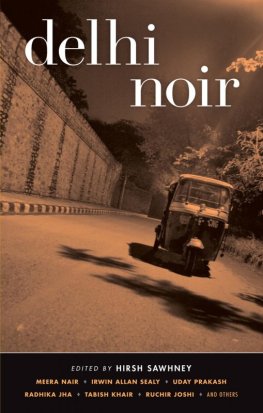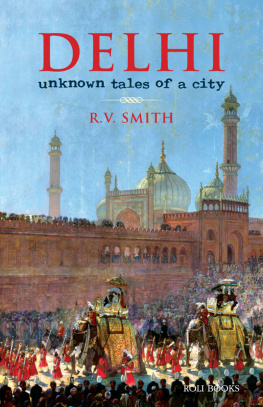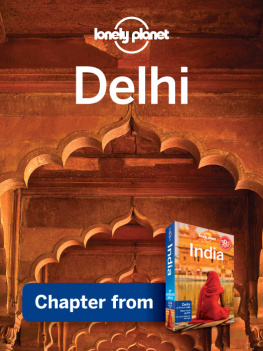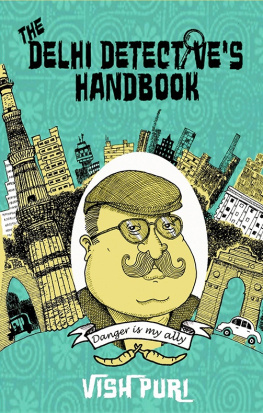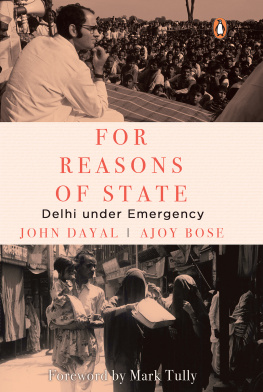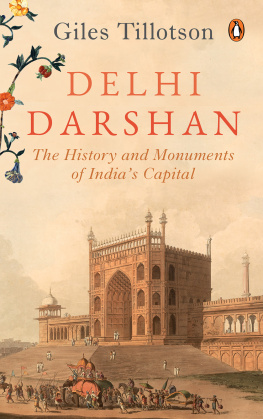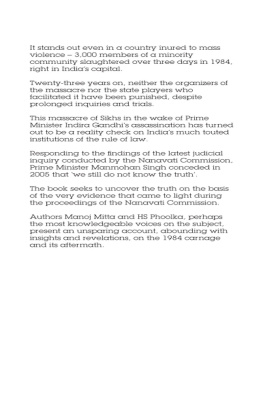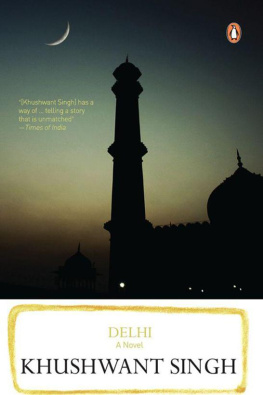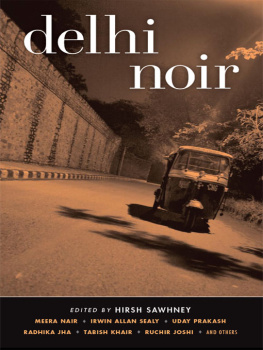Omair Ahmad - Delhi Noir
Here you can read online Omair Ahmad - Delhi Noir full text of the book (entire story) in english for free. Download pdf and epub, get meaning, cover and reviews about this ebook. City: New York, year: 2009, publisher: Akashic Books, genre: Detective and thriller. Description of the work, (preface) as well as reviews are available. Best literature library LitArk.com created for fans of good reading and offers a wide selection of genres:
Romance novel
Science fiction
Adventure
Detective
Science
History
Home and family
Prose
Art
Politics
Computer
Non-fiction
Religion
Business
Children
Humor
Choose a favorite category and find really read worthwhile books. Enjoy immersion in the world of imagination, feel the emotions of the characters or learn something new for yourself, make an fascinating discovery.
- Book:Delhi Noir
- Author:
- Publisher:Akashic Books
- Genre:
- Year:2009
- City:New York
- ISBN:978-1-933354-78-1
- Rating:5 / 5
- Favourites:Add to favourites
- Your mark:
- 100
- 1
- 2
- 3
- 4
- 5
Delhi Noir: summary, description and annotation
We offer to read an annotation, description, summary or preface (depends on what the author of the book "Delhi Noir" wrote himself). If you haven't found the necessary information about the book — write in the comments, we will try to find it.
Delhi Noir — read online for free the complete book (whole text) full work
Below is the text of the book, divided by pages. System saving the place of the last page read, allows you to conveniently read the book "Delhi Noir" online for free, without having to search again every time where you left off. Put a bookmark, and you can go to the page where you finished reading at any time.
Font size:
Interval:
Bookmark:
Delhi Noir
In memory of Shiv Lal Sawhney
19332009
Introduction
Everyday anguish

Delhi, a city thats been reborn in various locations and forms throughout its thousands of years of history, was in the midst of yet another colossal transition when I arrived here four years ago. This latest metamorphosis was being fueled by legislation that opened up India to private and foreign investors. International brands like the Wall Street Journal and Chanel were setting up shop. The citys cruddy public transportation system was being revolutionized by an ultramodern metro. My mothers massive Punjabi family Partition refugees whod happily lived in a one-bedroom Connaught Place flat during the 1950s were driving Hondas and Hyundais and comparing plasma television prices.
For the first time in decades, members of the educated elite were experiencing a gleeful surge of nationalism, and they wanted to savor it. They bragged about the new malls and cinemas going up in Gurgaon, a quasi-American suburb in which civic planning plays second fiddle to corporate whims. They reveled in the number of billionaires who called their city home, as well as the rising values of the houses their parents had built. But things werent and arent as good as everyone wanted to believe.
Every morning, papers abound with alarming stories: accounts of the unmitigated corruption and contract killing that make this city of more than fifteen million tick; indications of increasing divisions between rich and poor that lead servants to murder masters and foment Maoist movements in the countrys hinterland; synopses of so many rapes and sexual assaults that readers become numb to them. Yet the everyday depravity and anguish of Delhi life remains confined to news copy. Despite notable exceptions like Namita Gokhale and Arvind Adiga, authors of literature particularly those who write in English usually choose to ignore the capitals stains.
Other Indian metropolises have had writers whove chronicled the perils of urban existence, and some of these individuals have done so by employing the devices of crime and detective fiction. Mumbai, Indias film capital, lays claim over Vikram Chandra, who published the mammoth noir tomb Sacred Games, and Altaf Tyrewala, who wrote an impressive slim book called No God in Sight. Looking futher back, the iconic Urdu author Saadat Hasan Manto called Bombay home, even though his macabre stories were set in different locations. The legendary Bengali filmmaker Satyajit Ray also wrote detective stories, as did Bengali Sharadindu Bandyopadhyay, whose enigmatic Sherlock Holmesesque Byomkesh Bakshi mysteries are set in Calcutta.
What then explains the lack of noir literature and fiction in general set in Delhi? The answer may be simple. Good crime fiction, however seductive and pleasurable, forces readers to reckon with the inequity and cruelty inherent to modern societies. Its only natural that Delhis book-buying-and-publishing citizens would avoid such writing. Any insight into their hometowns ugly entrails would threaten their guilt-free gilded existence and the bubble of nationalistic euphoria in which their lives are contained. They are too dependent on the power structures and social systems intrinsic to the city embassies, government offices, and corporations; rural poverty and illegal immigration to risk looking critically at these things.
Thankfully, there are writers who are willing to see Delhi as it is, and this anthology contains stories by fourteen of them. Delhi Noirs contributors are diverse: They are Christians, Hindus, Muslims, Sikhs; Punjabis, Biharis, Bengalis, and Keralites; men and women; gay and straight. Many reside in the capital, but others have addresses in Uttarakhand or the U.S. Some have published critically acclaimed books, and a few are still working on their first manuscripts. What they have in common is the inclination to write delectable literature that doesnt shy away from the citys uncomfortable underside. Their fiction isnt politically correct and refuses to pander to popular perceptions about India or its capital, perceptions that conform with the agendas of governments, glossy magazines, and multinational corporations.
Ive borrowed three popular slogans that are tattooed across the city to divide these fourteen stories into sections. The title of the first section With You, for You, Always is the well-known motto of the Delhi Police. These stories range from humorous to perverted, but all scrutinize the presence (or lack thereof) of the cops who man the front lines of the capitals law-and-order system. Newcomer Omair Ahmads detective story forces readers to come to terms with the fact that the Congress-led government was complicit with the massacre of innocent Sikhs in the wake of Prime Minister Indira Gandhis assassination. Irwin Allan Sealys tale about a vigilante autorickshaw driver who avenges sexual assault on the Ridge is defined by the wry, rhythmic prose that garnered him a place on the Booker Prize shortlist in 1998. Author and civil servant Nalinaksha Bhattacharya invites us into the life of a police officer who extorts sex from the wives of low-level central government employees. His is a sardonic, hard-hitting parody of the Indian television serials that are voraciously consumed by all rungs of society those who live in brothels, mountain villages, and the extravagant farmhouses of Delhi.
The second sections title Youngistan (land of the youth) is a spoof of a Pepsi advertising campaign that attempts to appeal to Indias 200,000,000 young people aged between fifteen and twenty-four. Unlike the folks in the ad, however, lives in these stories dont get easier by drinking a cola or encountering megastar Shah Rukh Khan. In Delhi-raised New York resident Mohan Sikkas Railway Aunty, an orphaned college student stumbles into a prostitution ring that lurks beneath Paharganjs veneer of civil servants and backpackers. Bihar-born Delhi resident Siddharth Chowdhury bewitches readers with his raunchy, violent musing on life in a university dormitory. His prose alters the DNA of the English language, and is the literary version of good jazz.
Walled City, World City, the slogan heading the final section, stems from a Times of India campaign that encourages Delhi citizens to forget the citys painful past, its riots and pogroms. This bullish advertisement makes a simple comparison between Delhis history Mughal rule, colonialism and its current aspirations superpowerdom, cosmopolitanism. But Tabish Khair, author, academic, and a former Times of India reporter, reminds us that border crossings arent just comfortable flights on 747s. They also define the lives of countless young farmers and laborers whove abandoned rural India for the capital to cook, clean, and shine shoes. Veteran Uday Prakash scrutinizes the promise of social mobility in the new India and exhibits the vitality and universality of Hindi-language writing. Closing out this volume, the always provocative playwright, author, and illustrator Manjula Padmanabhan trans-ports readers to a nightmarish futuristic vision of Delhi as a world city.
These fourteen stories span the length and breadth of Delhi, from familiar spots like Jantar Mantar and Lodhi Gardens to more off-the-beaten-path neighborhoods like Gyan Kunj and Rohini. Together they give you an alternative map to the city, one that doesnt shy away from its strident flaws and yet also sheds light on beauty in overlooked corners and conversations.
Delhi readers will be well acquainted with this volumes Blue Line buses and Mughal tombs, and also with most of its contributors. But this is the first time they will see original works of fiction by such a varied, talented group of authors in a single book. Non-Indian readers will be unfamiliar with many of the names in this book, which will hopefully offer them a rare taste of a different type of Indian writing: literature that fascinates simply because its well written not exotic. For these readers, we have provided a glossary of the Hindi, Urdu, and Punjabi words used in
Font size:
Interval:
Bookmark:
Similar books «Delhi Noir»
Look at similar books to Delhi Noir. We have selected literature similar in name and meaning in the hope of providing readers with more options to find new, interesting, not yet read works.
Discussion, reviews of the book Delhi Noir and just readers' own opinions. Leave your comments, write what you think about the work, its meaning or the main characters. Specify what exactly you liked and what you didn't like, and why you think so.

